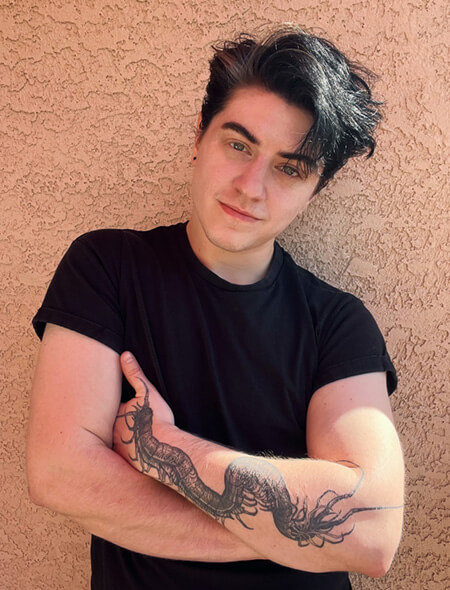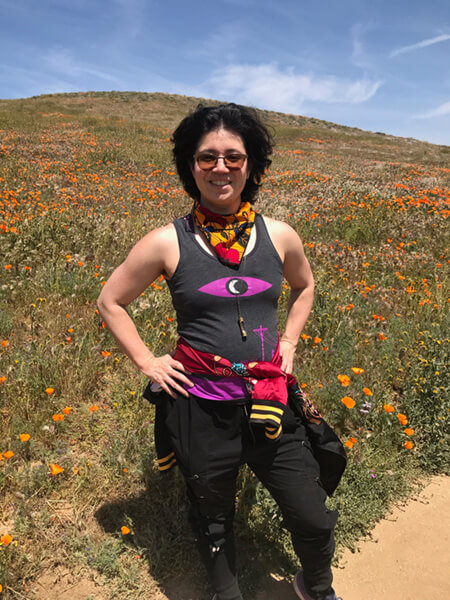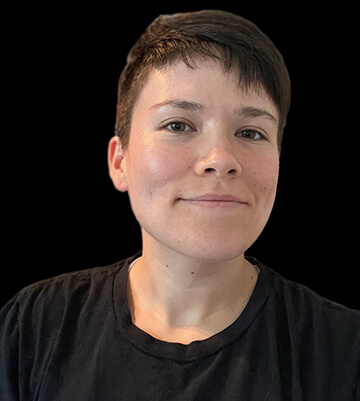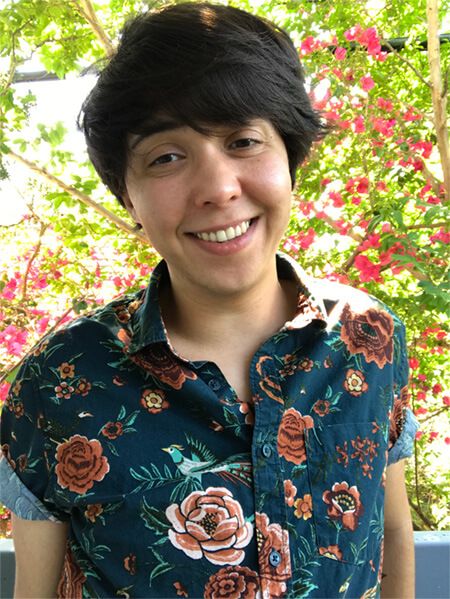The Fear of Trans Stories in Animation
The animation industry has a problem, one that has caused passion projects, shows, and pitches to not see their true potential. It has made creatives anxious and unsure if they should even continue trying, caused awkward situations for creators and writers and has increased the distrust viewers have towards creators and studios. The problem? A fear of trans stories.
The progress the industry has seen for the past five years is not denied or ignored; when it comes to LGBT+ representation, it has jumped miles ahead. We have seen characters look to the screen and unapologetically state their queerness, we have seen the celebration and pain of coming out plotlines, and we have seen the first few trans characters become the main characters. There is a reason why this particular industry is regarded as one where some LGBTQ+ creatives have felt most comfortable in.
However, five trans writers, creatives, and artists, join us at Skwigly to tell their stories of an industry that remains afraid of truly pushing diversity.

King Romeo Pecora
King Romeo Pecora, a transgender story artist and writer previously working at Disney and Titmouse, has written for shows that went above and beyond to represent LGBTQ+ identities. Similarly to many other trans creatives, King began transitioning while working in the industry and in the midst of the pandemic. In his work, he faced no discrimination and felt lucky for the acceptance that surrounded him.
However – and again, similarly to many other trans creatives – this acceptance only reaches so far. King, while trying to pitch his ideas, saw that the concept of representation was often seen by executives as an obstacle. He recounts:
What I noticed while pitching was that a lot of people seem to shy away from the idea of trans main characters. I would hear the word ‘niche’ a lot as I was pitching these concepts, and I didn’t quite know what they meant by that. I was like ‘How is it niche?’ Like a lot of my ideas, I felt like they were pretty accessible and marketable.
Pitches are rarely successful, and there are many elements that can burn an idea before it takes flight. However, in the case of trans-led narratives, it is never the story that is called into question, but rather the suggestion of having proud queerness and identity at the front and centre.

Charley Feldman
Charley Feldman, trans non-binary producer at Marvel whose previous credits include writing for Disney, once faced the same judgment when trying to pitch a story inspired on the story of their late mother, featuring a non-binary character based on Charley themselves. The difference would be that their character would have understood the concept of being non-binary as a teenager, something Charley admitted they wished to have had (they would only find their “moment” of discovery when starting their career in the industry and working on The Owl House).
When I pitched it, they’d be like ‘The writing is great. It feels very now. But does this character have to be nonbinary? It just seems like it’s too much.’ Oh my God, it was so painful to hear something like that.
This fear only expands and is further affected by a dearth of diversity in the writing rooms. A lack of trans writers, a lack of consultation and experience, has led to fear and frustration by trans creators that their stories only involve the same handful of tropes or pain and tragedy.
In a writer’s room, there’s a lot of tokenization happening where you are sort of speaking for everybody, because you often find yourself to be the only queer person in the room, the only trans person in the room, the only non-binary person in the room – it does fall on you to explain a lot, or push narratives….
I have never been in a room with another trans person, ever. I would love to. I think that would be amazing. More trans people in the room. Let’s see it. That would be a dream come true, where we would be writing about all sorts of stories and not just the tragedy of a trans character.
This dream would be more possible were it not for the many unlucky situations some trans writers still face in the industry. While some creators fight for months to have two characters of the same sex kiss, for others even the mere proposal of it is shut down.

Sage Cotugno
Sage Cotugno, now a non-binary supervising director at Titmouse, began to discover themselves in the pandemic and, soon after, felt safe to present their true self in their workplaces. However, even before coming out and since starting in the industry in 2013, they had always aimed to increase diversity and representation in animation. It was through this push that they experienced fear and “shadow banning” in storytelling.
In my experience, if a studio wanted to shut down queer representation, they would simply find a way to excuse it without ever using the words ‘gay’, ‘queer’, ‘trans’. They would never use that as a specific excuse.
The thing is that, in a creative industry, there are so many different reasons why an idea can’t go through. And that makes it really, really difficult to prove fear in trans storytelling because you can just say, ‘Oh no, no, no, no. It’s not because it’s a trans character; this design is already approved.’ ‘Sorry, we’re just passed that in the pipeline.’ ‘Sorry, we just don’t do that at this stage.’ There’s literally an infinite number of reasons you could use to justify pulling representation out of a show.
This shutdown for Sage, as well as many other creatives, caused isolation and hopelessness. As seen with Sage and others, trans creatives take the chance to come out while working in accepting and diverse spaces. However, the scrutiny towards representation has made many not entirely comfortable in truly being themselves in the studio. Sage stated:
Having been through those experiences, I decided not to make myself a target. I don’t want to seem like I’m not broad appeal. So, I’m going to hide those parts of myself and not bring that to work. But then I was explicitly asked ‘No, we want to see this part of you. We want you to come out of your shell and be your gay and mixed-race self.’ And then the head of that studio left and so all of her projects got killed, and I just truly felt ashamed for having believed them, you know, for having put myself out there, putting this very vulnerable aspect of myself on display only for it to get smacked down.
This lack of support from one of the most diverse industries only takes a bigger toll on trans creatives when they also face the consequences of the current political landscapes that diminish and make a debate of their lives. The industry, even if diverse, is not immune to the needs of executives to avoid stories that, in their eyes, are more controversial than profitable.

Emi Yonemura
Emi Yonemura, a genderfluid director currently at Marvel, has worked in the industry for almost a decade. They have faced situations where they were prevented from writing stories on male characters due them being born female, and worked in writing rooms where trans stories are non-existent. Says Emi:
They were just too scared that trans stories would affect numbers, that they’ll turn off too much of the audience. I think people need to just get past that and understand that these are still just as rich stories.
They need to just have main characters that are nonbinary and trans, have them be present and not just talk about their gender identity. It’s like we’re full, rich, well-rounded people and I want to see more execs and storytellers actually take that chance… It’s not something to be awkward or ashamed to have. Could you imagine having a trans Superman character and the good influence it could be for kids? I just feel like there’s no one, at least outside of the queer community, who’s willing to take huge steps like that.
In the last five years, we have seen series pushed by queer creators like Dead End: Paranormal Park, The Owl House, Steven Universe, She-Ra and others make huge strides with diversity. However, their accomplishments were soon followed by abrupt cancellations or frustrated showrunners either threatening to leave or just leaving studios completely. So even when queer creators carry on pushing their stories, there is only so far they can go against this fear.

Raye Rodriguez
Raye Rodriguez, trans showrunner of High Guardian Spice, tried to pitch the show for five years before it would eventually get picked up by Crunchyroll as part of their original series.
I don’t think we’re totally at the point of this kind of representation being normal. We’re sort of getting better at it, but it still is a little bit weird, depending on the studio. That was something that was really nice about Crunchyroll. When we started working on High Guardian Spice, they were like, ‘be as gay as you want’, we’re like, ‘really?’ And they’re like, ‘yeah, go for it’. Like, when I had pitched High Guardian, I was pitching it as a kids show for like Nickelodeon, Frederator, Cartoon Network etc, so I was kind of downplaying the queerness of it.
The show took this opportunity to be as queer and loud in its representation as it could. It featured a cast of mostly queer characters and plotlines that touched on the gender and transition of two characters. However, the uncertain future of the show has left the diverse plotlines, characters, and themes it wished to explicitly and openly tackle not fully developed.
Queer writers and creators are now getting used to rushing – or not developing – their queer plotlines due to the recent rise in cancellations. Raye comments that this is due to the industry’s fear of going beyond ‘niche’ stories to its fear in believing these will most likely not give back their budget:
It is a business – studios want to make money and that’s kind of what it’s about, unfortunately. There is also the aspect of the current, really scary time in the United States for queer and trans people. I do think that studios respond to that. There are some companies that, for whatever reason, have decided that they are like protectors of the gays. So that helps us. But that’s only as long as those companies decide to be that kind of brand.
In between the unrepresented writing rooms, cancelled shows, and tokenised workers, there are truly diverse and inspiring projects brewing. In these projects there will be people, new or veterans, with a desire to show their appreciation and love to their trans siblings. Animation has proven to become one of the most liberating mediums for artists and creatives worldwide. It gives the option for artists to tell their personal stories in new and unique ways. This liberation makes it possible for representation to thrive and create a safe space for creators to discover and embrace themselves in the industry. So now, it is the turn of the industry itself to take notice of their passion and drive for genuine and progressive storytelling.
In the conversation with Charley Feldman, they ended their stories of frustration with a hope for the future that many trans creatives across the industry share:
We are trying to take care of our inner child by taking care of all the outer children who watch the characters we create, who are a reflection of who we wish we had, an openness and the understanding in our youth. It’s a gift we want to give to kids and teens and families now, to have this space, to have these discussions and an understanding, love, acceptance, support and a celebration. If we have any agenda, please let’s make it that.


